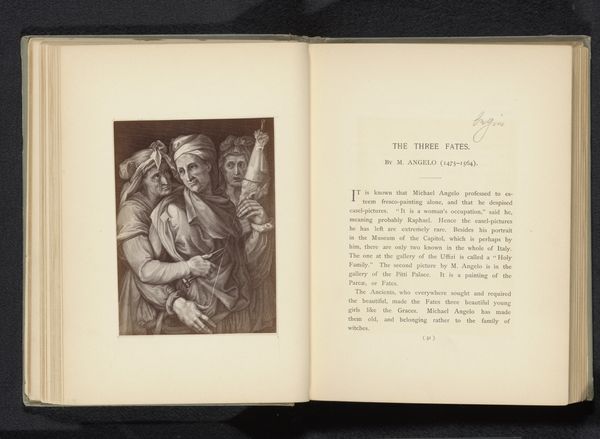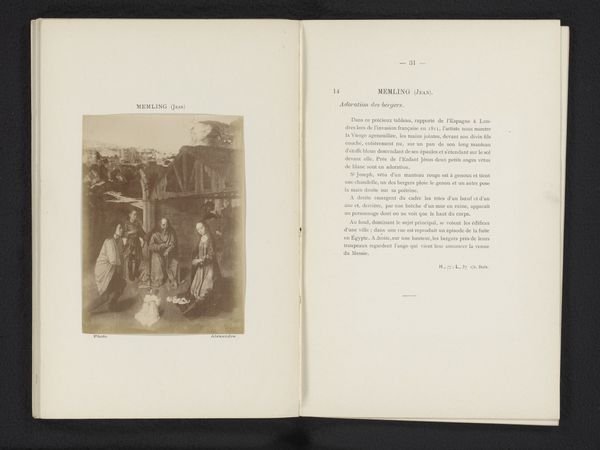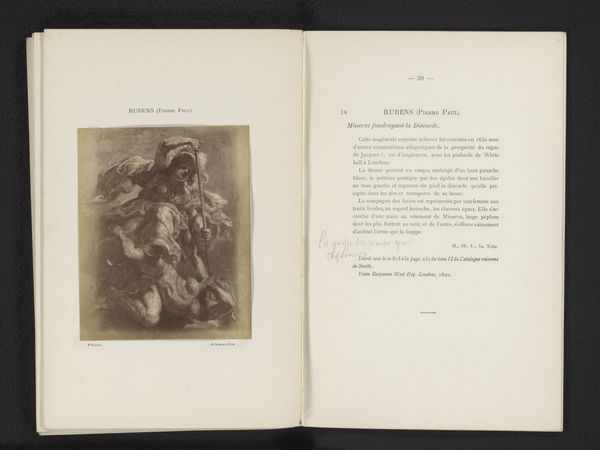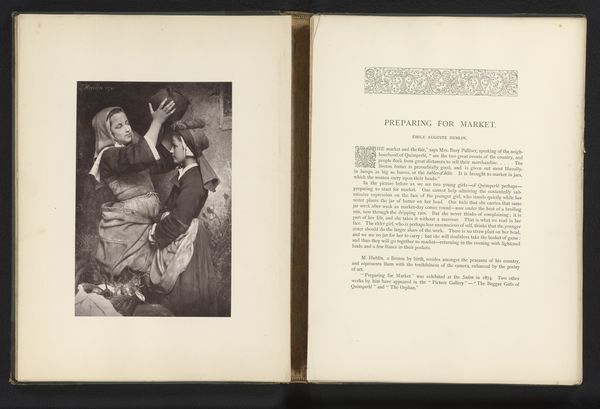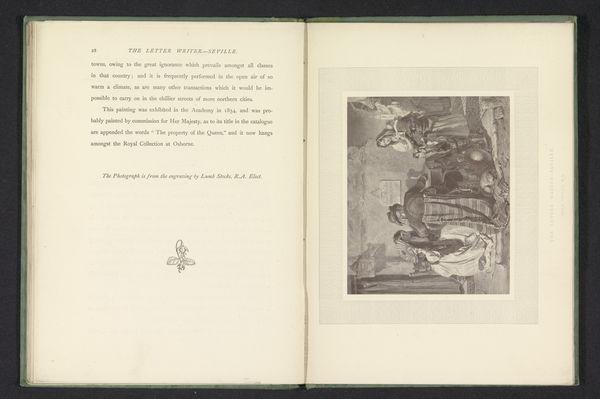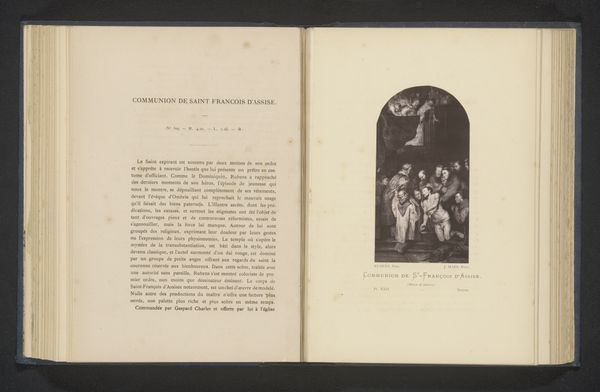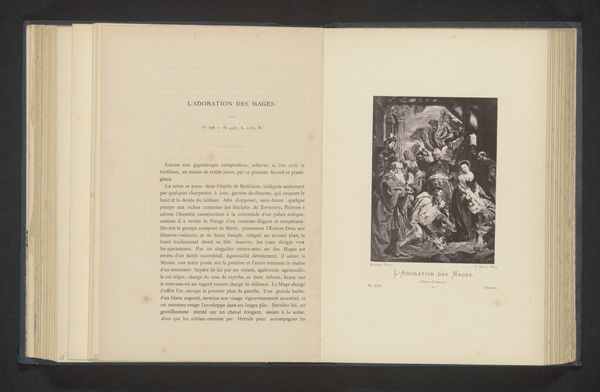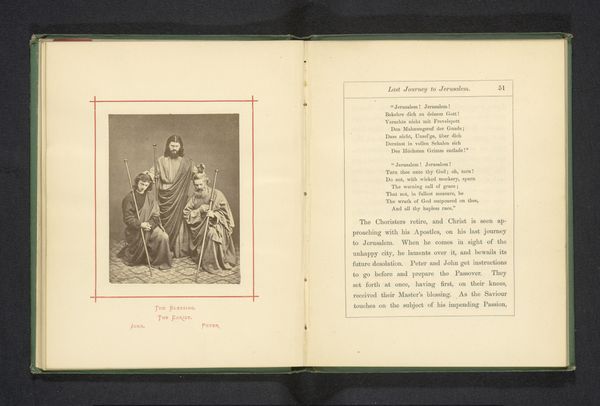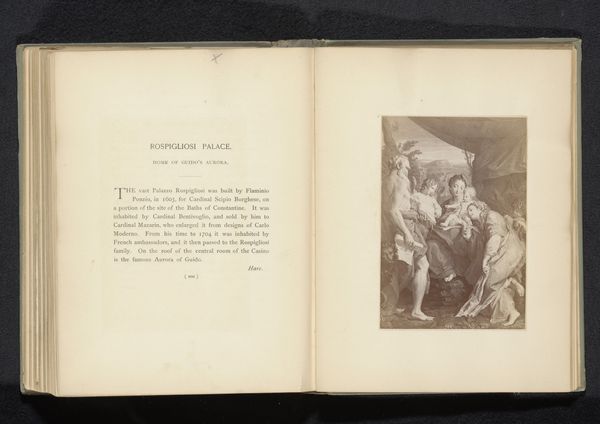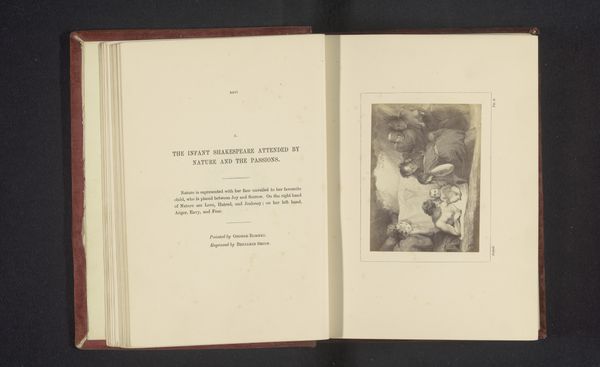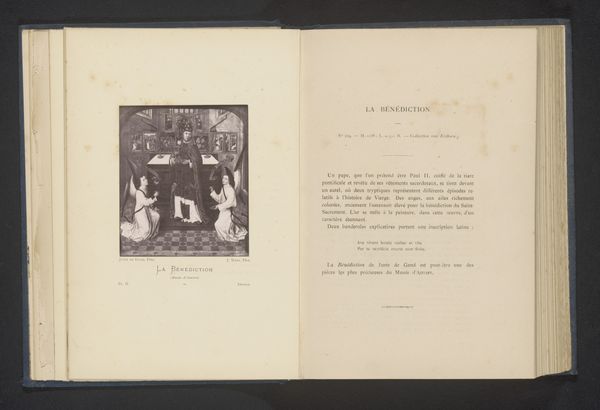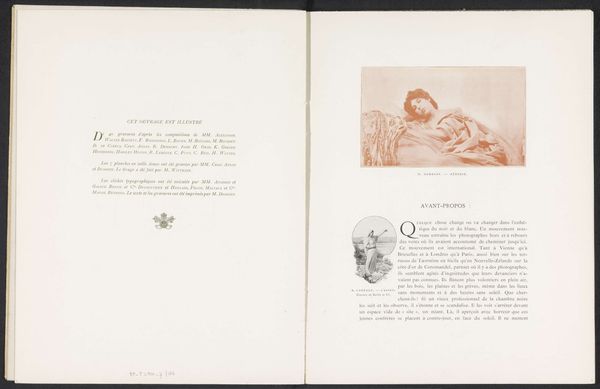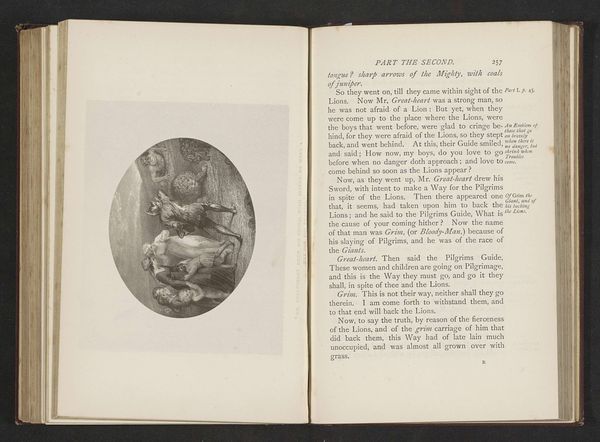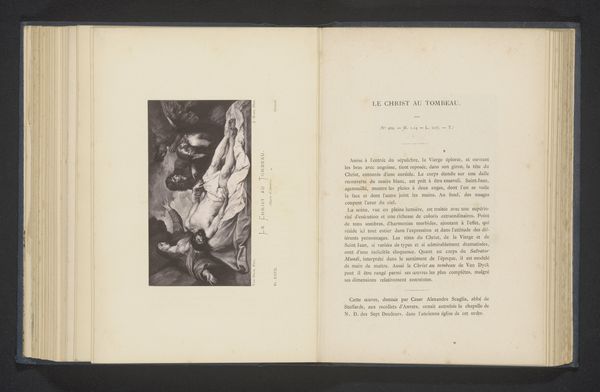
Fotoreproductie van een schilderij van een vrouw die textiel uitzoekt voor een trouwjurk door William Mulready before 1873
0:00
0:00
print, photography, engraving
# print
#
photography
#
genre-painting
#
history-painting
#
engraving
#
realism
Dimensions: height 136 mm, width 114 mm
Copyright: Rijks Museum: Open Domain
Editor: This engraving reproduces William Mulready’s painting "Choosing the Wedding Gown," which dates before 1873. It depicts a young woman selecting fabric, presumably for her wedding dress, with a slightly somber feel. What narratives do you see embedded in this image? Curator: This piece, rendered through print, speaks volumes about 19th-century societal expectations surrounding marriage. Note the attention to detail in portraying the transaction; a business exchange of a bride that was very common at this period. Consider the limited choices women had at the time. Do you notice how the men, including the cloth merchant, are active, while the bride seems demure, contemplative, and obedient. How does that dynamic play into our understanding of women's agency? Editor: I hadn't thought about the dynamics so explicitly. The merchant’s body language seems more assertive than hers, now that you mention it. The picture seems so simple, but these complex social power dynamics give it additional layers. Curator: Exactly. Mulready gives us an almost sociological study on gender and class. The presence of a chaperone, possibly her mother, in the background further highlights the patriarchal oversight prevalent in Victorian society, ensuring the young woman adheres to the proper conventions of womanhood. The choice isn’t solely hers; it is framed and observed. This isn’t just about fabric; it's about societal fabric and how it confines women. Do you see how realism in art is therefore critical? Editor: That’s such an insightful point. I was initially caught up in the literal image, the wedding gown and overlooked how deeply social and political its representation is. Curator: It is always vital to contextualize artistic works within their era. These pieces provide valuable entryways for interrogating those contexts, offering both knowledge of the period as well as an angle into the artist's beliefs.
Comments
No comments
Be the first to comment and join the conversation on the ultimate creative platform.
